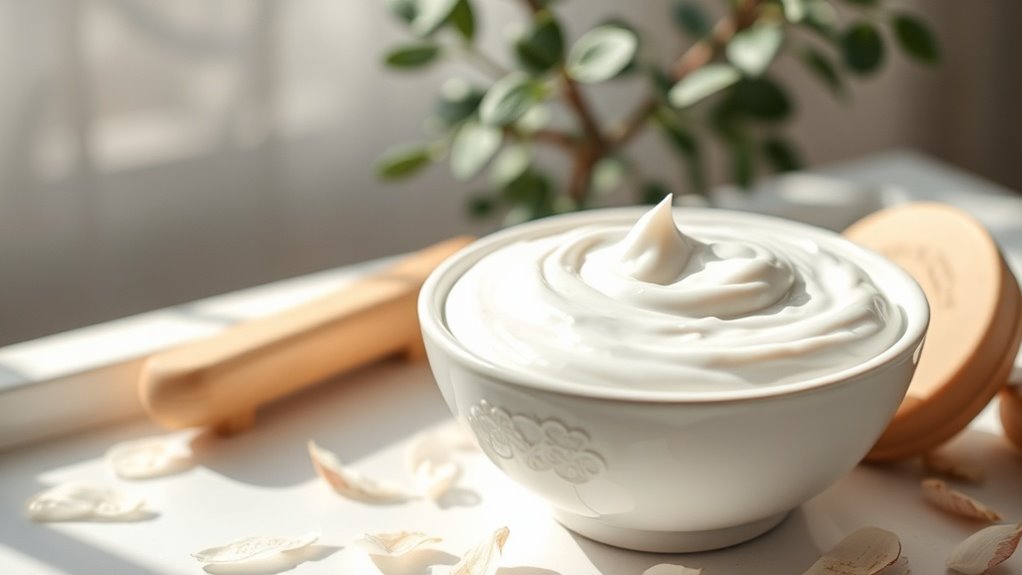The Gentle Exfoliation Method for Sensitive Skin
If you have sensitive skin, finding an exfoliation method that won’t irritate your complexion is crucial. Gentle exfoliation can effectively remove dead skin cells and promote a healthy glow. Understanding the right products and techniques is essential for your skin’s comfort and well-being. By incorporating specific ingredients and methods, you can enhance your skin’s appearance while minimizing risks. Let’s explore how to achieve optimal results without compromising your skin’s delicate balance.
Understanding Sensitive Skin
When it comes to skin care, understanding sensitive skin is crucial for effective treatment.
Sensitive skin often reacts adversely to products and environmental factors, leading to discomfort and irritation. Identifying your skin’s triggers is essential.
Gentle exfoliation can help by removing dead skin cells without causing additional stress. Choose products with mild ingredients to maintain the skin’s protective barrier and prevent potential flare-ups. Incorporating a gentle daily cleansing routine is vital to prevent irritation and keep your skin balanced.
Benefits of Gentle Exfoliation
Gentle exfoliation offers numerous benefits for sensitive skin, particularly when it comes to improving texture and enhancing the skin’s overall appearance.
-
Removes dead skin cells
-
Boosts cellular turnover
-
Increases product absorption
-
Promotes a radiant complexion
Incorporating a gentle exfoliation method can help you achieve healthier skin, minimize irritation, and maintain a youthful glow. Additionally, it is essential to avoid harsh scrubs that can worsen skin conditions and lead to further irritation.
Recommended Ingredients for Sensitive Skin
For sensitive skin, selecting the right ingredients is crucial to avoid irritation while still reaping the benefits of exfoliation. Look for gentle exfoliants like lactic acid and mandelic acid, which promote cell turnover without causing redness. Soothing ingredients such as aloe vera and chamomile can enhance hydration and reduce inflammation. Aloe vera, celebrated for soothing red skin, has anti-inflammatory properties that further complement your skincare routine. Always patch-test new formulations to ensure compatibility with your unique skin sensitivity.
Exfoliation Techniques to Try
Choosing the right exfoliation technique can significantly enhance your skincare routine while minimizing risks for sensitive skin.
Consider trying these methods:
- Gentle scrubs with fine particles.
- Enzyme-based exfoliants like papaya or pineapple.
- Chemical exfoliants with low concentrations of AHAs or BHAs.
- Soft washcloths for physical exfoliation without irritation.
Each technique promotes cell turnover while being considerate of your skin’s sensitivity. Additionally, maintaining a balanced approach is essential for optimal results while caring for sensitive skin.
How Often to Exfoliate
Finding the right frequency for exfoliation can be crucial for maintaining healthy skin, especially if you have a sensitive complexion.
Generally, exfoliating once a week is recommended for sensitive skin; this allows for effective cell turnover without causing irritation.
Monitor your skin’s response closely; if redness or discomfort occurs, reduce the frequency further. Over-exfoliation can lead to dryness and flakiness, which may compromise your skin’s natural barrier.
Always listen to your skin’s needs for optimal results.
Aftercare for Optimal Results
Since exfoliation can temporarily compromise the skin’s barrier, it’s essential to follow a proper aftercare routine to maximize your results.
Consider these key steps:
- Hydrate with a gentle moisturizer.
- Avoid sun exposure; apply broad-spectrum SPF.
- Refrain from using active ingredients for 24 hours.
- Stay consistent with your aftercare regimen for optimal skin recovery.
Proper aftercare ensures your skin retains its health and glow.

